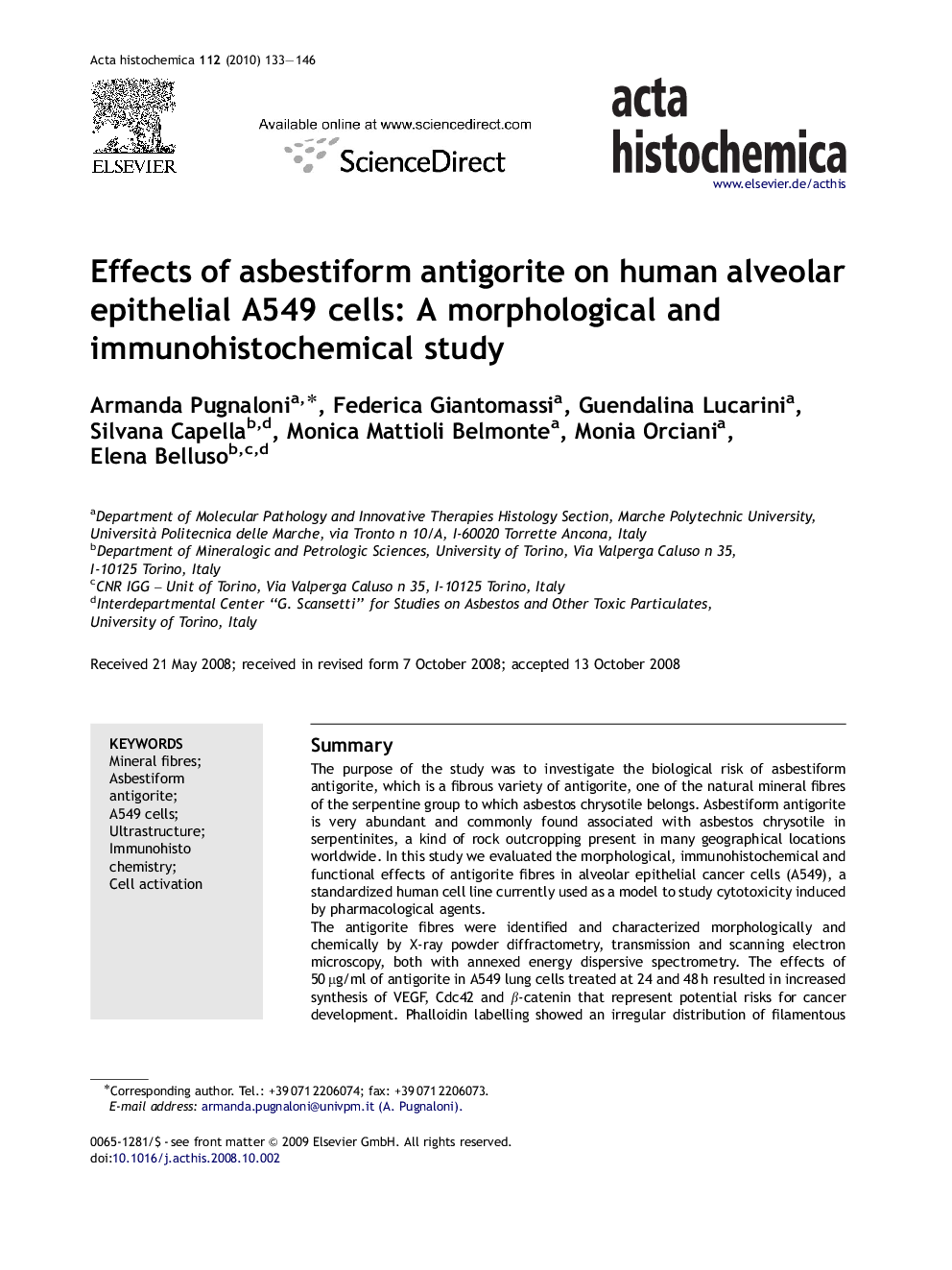| Article ID | Journal | Published Year | Pages | File Type |
|---|---|---|---|---|
| 1923995 | Acta Histochemica | 2010 | 14 Pages |
SummaryThe purpose of the study was to investigate the biological risk of asbestiform antigorite, which is a fibrous variety of antigorite, one of the natural mineral fibres of the serpentine group to which asbestos chrysotile belongs. Asbestiform antigorite is very abundant and commonly found associated with asbestos chrysotile in serpentinites, a kind of rock outcropping present in many geographical locations worldwide. In this study we evaluated the morphological, immunohistochemical and functional effects of antigorite fibres in alveolar epithelial cancer cells (A549), a standardized human cell line currently used as a model to study cytotoxicity induced by pharmacological agents.The antigorite fibres were identified and characterized morphologically and chemically by X-ray powder diffractometry, transmission and scanning electron microscopy, both with annexed energy dispersive spectrometry. The effects of 50 μg/ml of antigorite in A549 lung cells treated at 24 and 48 h resulted in increased synthesis of VEGF, Cdc42 and β-catenin that represent potential risks for cancer development. Phalloidin labelling showed an irregular distribution of filamentous actin resulting from antigorite contact. Our studies indicate potential cellular toxicity of antigorite in vivo, providing the opportunity to elucidate the effect of asbestos on cancer induction and possible modes of therapy.
